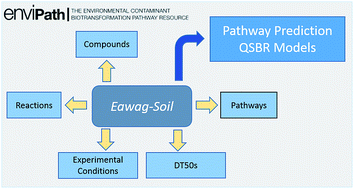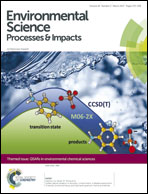Eawag-Soil in enviPath: a new resource for exploring regulatory pesticide soil biodegradation pathways and half-life data†
Abstract
Developing models for the prediction of microbial biotransformation pathways and half-lives of trace organic contaminants in different environments requires as training data easily accessible and sufficiently large collections of respective biotransformation data that are annotated with metadata on study conditions. Here, we present the Eawag-Soil package, a public database that has been developed to contain all freely accessible regulatory data on pesticide degradation in laboratory soil simulation studies for pesticides registered in the EU (282 degradation pathways, 1535 reactions, 1619 compounds and 4716 biotransformation half-life values with corresponding metadata on study conditions). We provide a thorough description of this novel data resource, and discuss important features of the pesticide soil degradation data that are relevant for model development. Most notably, the variability of half-life values for individual compounds is large and only about one order of magnitude lower than the entire range of median half-life values spanned by all compounds, demonstrating the need to consider study conditions in the development of more accurate models for biotransformation prediction. We further show how the data can be used to find missing rules relevant for predicting soil biotransformation pathways. From this analysis, eight examples of reaction types were presented that should trigger the formulation of new biotransformation rules, e.g., Ar-OH methylation, or the extension of existing rules, e.g., hydroxylation in aliphatic rings. The data were also used to exemplarily explore the dependence of half-lives of different amide pesticides on chemical class and experimental parameters. This analysis highlighted the value of considering initial transformation reactions for the development of meaningful quantitative-structure biotransformation relationships (QSBR), which is a novel opportunity offered by the simultaneous encoding of transformation reactions and corresponding half-lives in Eawag-Soil. Overall, Eawag-Soil provides an unprecedentedly rich collection of manually extracted and curated biotransformation data, which should be useful in a great variety of applications.

- This article is part of the themed collection: QSARs and computational chemistry methods in environmental chemical sciences


 Please wait while we load your content...
Please wait while we load your content...